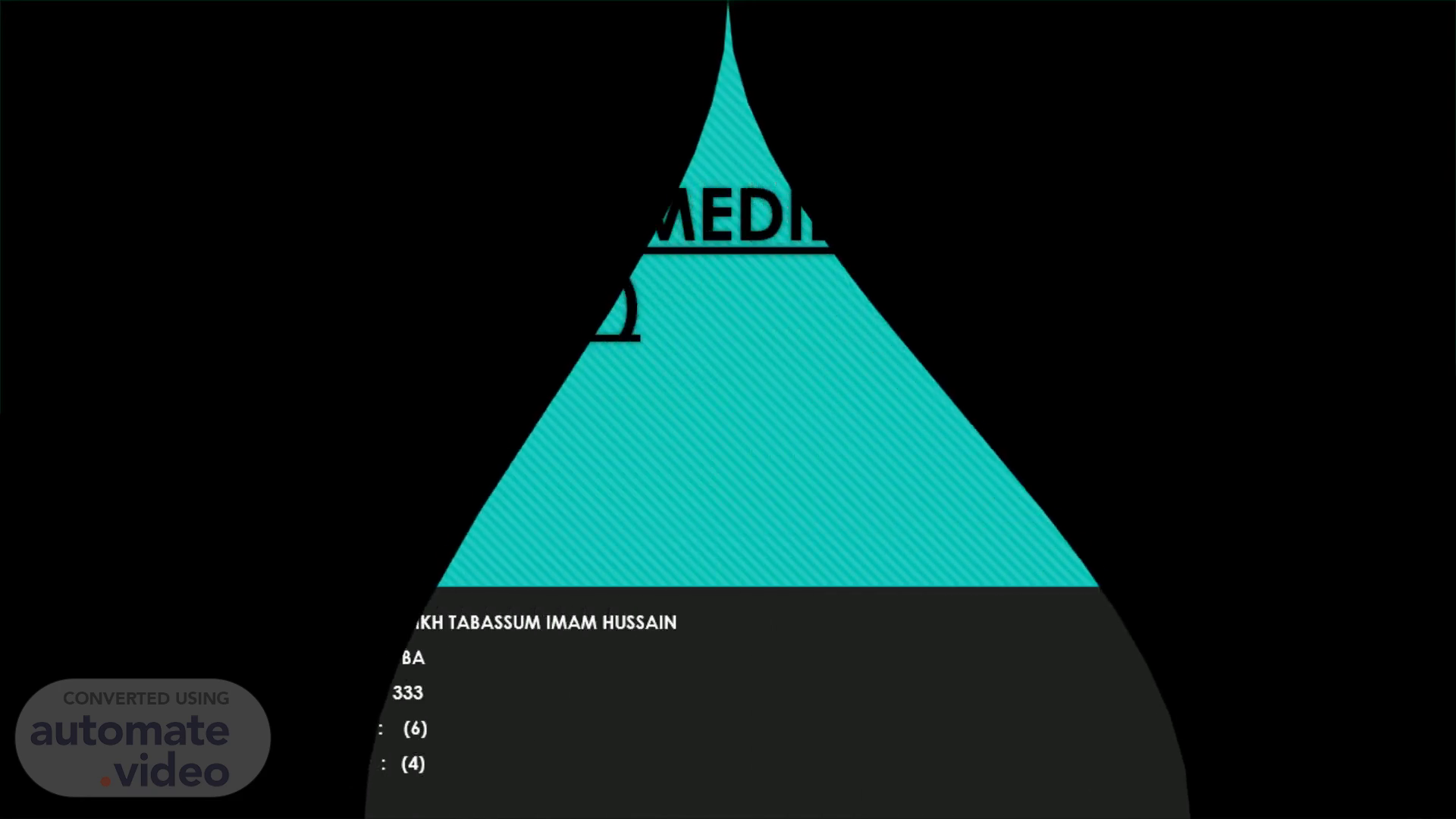
HISTORY OF MEDIEVAL INDIA ( 1526-1707)
Scene 1 (0s)
HISTORY OF MEDIEVAL INDIA ( 1526-1707). NAME ; SHAIKH TABASSUM IMAM HUSSAIN STD : TYBA ROLL NO. : 333 SEMESTER : (6) PAPER. : (4).
Scene 2 (23s)
MUGHAL EMPIRE : SHER SHAH SURI (1540-1545 ). Sher Sha Suri.
Scene 3 (42s)
EARLY LIFE OF SHERSHA SURI:. He was a Founder of suri Empire. He’s orignal name is Farid Khan. He was the son of Hasan Khan. The capital of this empire was situated at Sasaram (BIHAR) Earlier He start his service with bahar Khan lohani( governor of Bihar) He was also become a regent of Jalal Khan lohani. He was rewarded the tittle of Sher Khan by bahar Khan lohani. conquering Bihar and Bengal . He defeated the army of the ghyasuddin in the battle of surajgadh in 1534. Achieve complete control over Bihar Attacked Bengal in 1538 he forced humayun out of India at the bettle of chausa. Ascended the throne of Delhi..
Scene 4 (2m 5s)
BETTLE OF CHAUSA. Shershah'smet humayun in bettle on the banks of the Ganges, near Benares in chuasa on 1539AD. This was to become an entrenched bettle in which both sides spent a lot of time digging themselves into position. After the army of Humayun had made its charge and shershah’ crops made their agreed upon the retreat. The Mughal troops relaxed their defensive preparations and returned to their inter intenchment without posting a proper guard observing the Mughals mistake shershah reneged on his earlier agreement That very night his army approached the Mughal camp and finding the Mughal troops and prepared with a majority asleep advanced and kill most of them The imperial survive by swimming the Ganges using on air field water skin and queitly returned to Agra..
Scene 5 (6m 17s)
BATTLE VIDEO.
Scene 6 (9m 46s)
ADMINISTRATION REFORM OF SHERSHAH:. He was a greatest ruler and greatest administrators of medieval India He introduced many reforms on that basis Akbar build a superstructure of Mughal administration. He was the first Muslim ruler of India who display a real Aptitude civil government. He divided his whole Empire into 47 divisions called sarkars and this where again subdivided into smaller advocative units called purganas..
Scene 7 (10m 32s)
CENTRAL DEPARTMENT. Shershah established four main central department. Diwan I wijarat (finance department) Diwan I ariz ( military department) Diwan I rasalat ( royal secreteriat) Diwan I rasalat ( department for religious and foreign affairs) Diwan I qaza for justice (chief qazi) Diwan I barid Transfer massege to sultan through hourses , news writers etc) 2. PROVINCIAL ADMINISTRATION LOCAL ADMINISTRATION The entire province was divided into sarkars ( district) Each Sarkar was placed under the charge of a military officer called shiqdar I shiqdaran. Abovecall chief shiqdar s Shershah Appointed a civilian officer called Amir e bangala. PARAGANA ADMINISTRATION Each paragana was administer by shiqdar. Amin and munsif was an treasure. Two clerk’s 1 to maintain the records In Hindi and 2 in persian..
Scene 8 (11m 47s)
ECONOMIC REFORMS. LAND REVENUE : Improve the condition Of the peasents. Increase & stablized The revenue of the state. 1/3 rd revenue of land. The state took defined qubuliyat( deed of agreement) Patta deed of tittle ( for only farmers) Parwaris and muqaddam( village accounts) 2. CURRENCY REFORM . Silver – Rupaya Cooper – dam Arabic inscriptions on the shershah coins. 180 grains continue till 1835. Nagari script was introduced by him..
Scene 9 (15m 39s)
MILITARY DEPARTMENT. Large Standing army Introduce measures to make his army e disciplined and trained Took personal interest in appointment and training of soldiers Salary of soldiers and officers fixed according to skill and ability Subdivisions of army having commander Garrison where set up Highly trained cavalry and infantry equipped with artillery TradE and commerce Construction of roads and sarais helped in trade and commerce. Marchants were treated well. Zamindars and village heads were responsible for safety of traders. New weight and measures were introduced..
Scene 10 (19m 9s)
Low and order. Staunch believer in justice. Everyone treated equally Criminal laws were harsh. Village headmen and local chief responsible for crimes in their area Harsh but effective laws. Relegiuos policy . Followed a policy of religious tolerance. Appointed Hindus on high post of trust. Bramhaji and Raja todar mal, his oldest general. Large amount of money given in cherity..
Scene 11 (20m 57s)
QAND ARCHITECTURE. Sher Shah built several monuments including Rohtas Fort (now a UNESCO World Heritage Site in Pakistan), many structures in the Rohtasgarh Fort in Bihar, the Sher Shah Suri Masjid in Patna, the Qila-i-Kuhna mosque inside the Purana Qila complex in Delhi, and the Sher Mandal, an octagonal building also inside the Purana ... GRAND TRUNK ROAD : The Grand Trunk Road or the GT Road was built by Sher Shah Suri. It is one of the longest and oldest roads in Asia. It is roughly 3710km long and connects Central Asia to the Indian Subcontinent. It spans from Kabul, Afghanistan Teknaf in Bangladesh.
Scene 12 (22m 18s)
QILA I KUNHA (PURANA QILA).
Scene 13 (24m 22s)
Death of sher shah Sur :. Sher Shah Suri marched against the Kalinjar Fort and captured it. Soon after the capture, Sher Shah Suri ( Sher Khan) died on 22nd May, 1545. The Fort of Kalinjar is in the Buldelkhand region of Uttar Pradesh. Immediately after the conclusion of the successful campaign in Rajasthan, Sher Shah marched on Kalinjar. Raja Kirat Singh was the king of kalinjar. Sher Shah marched on Kalinjar and besieged the fort (November 1544)..
Scene 14 (25m 42s)
Thank you.